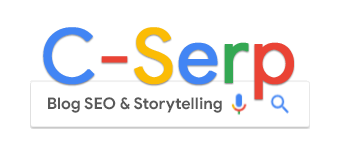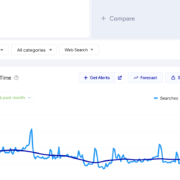An AI-powered process to diagnose E-E-A-T issues

E-E-A-T is one of the most used topics in SEO.
However, for a world moving toward an AI SEO-focused future, E-E-A-T may be the only strategy that SEOs can use.
This article tackles why and how to audit – and optimize for – your E-E-A-T.
Why E-E-A-T matters for AI-powered search
E-E-A-T (experience, expertise, authoritativeness, and trustworthiness) was never a ranking factor but rather a guide for website owners to understand the characteristics of sites that Google rewards.
It was based on years of Google quality raters assessing sites and Google understanding the aspects of websites that humans liked and thought were good.
This pattern analysis led to the now widely used term E-E-A-T as a catch-all guidance mechanism that Google employed and advised.
While this mattered for traditional SEO, many still ignored it, opting to buy links at scale or to scale AI content to create a topical authority model that would trick Google’s search signals into rewarding sites.
Each of these ends up with Google applying updates to search that have destroyed many SEO business models.
However, AI-powered search means all of this is essentially meaningless.
The industry is starting from scratch, and E-E-A-T is now the core of generative engine optimization (GEO).
Dig deeper: 6 easy ways to adapt your SEO strategy for stronger AI visibility
The new search process (and why E-E-A-T matters)
Perhaps it is best to think of the current search landscape as “Game of Thrones.”
- House Google.
- House OpenAI.
- House Gemini (closely aligned with House Google).
- House Perplexity.
- House ChatGPT.
Sure, there are others – but the key takeaway is that it’s a war out there.
The reason? We’re on the brink of a new search paradigm, one where AI handles the “knowledge search” for you.
This shift spares users a major cognitive load – and since humans are cognitive misers, always looking to conserve mental energy, every platform knows what’s really at stake.
This isn’t a battle for the best results in search. It’s a battle to become the place search begins.
However, regardless of which platform you search on, the results will be similar.
This is because AI-powered search aims to guide users closer to their goals.
Search now works like this.
- Step 1: The user has a problem.
- Step 2: The user requires additional information to resolve the problem (this is known as knowledge search).
- Step 3: AI conducts the knowledge search.
- Step 4: AI presents the knowledge needed to solve the problem.
- Step 5: AI presents options for solving the problem, such as tasks, products, or services.
In the past, Steps 3 and 4 were completed by the user.
They would then apply the knowledge and begin to identify the products or services required to solve the problem.
The user was heavily involved in knowledge search.
AI changes this and takes care of most of the searching for us.
Any SEO tactic involving knowledge search is largely redundant.
Today, you need to focus on being the product or service that AI-powered search recommends at the end.
Understanding how E-E-A-T works in GEO
GEO or AI-powered search works in two distinct ways.
An AI-powered NLP system will have training data they have stored within its model. This training data is updated periodically, and they now conduct real-time web search.
However, unlike traditional SEO, these systems can read multiple pages in split seconds. I refer to this as “scooping.”
Whereas previously we used to say that the best place to hide a body was on Page 2 of Google, today being on Page 2 or 3 can offer massive business opportunities.
This is because AI-powered search is highly personalized based on custom instructions and the system’s memory.
For ease, I suggest thinking of search in two brackets.
- Knowledge search.
- Solution search.
AI will conduct a knowledge search on behalf of the user, presenting that information as required.
It will then conduct a solution search based on the knowledge obtained and the user’s instructions.
And it’s here that AI-powered search will identify the products and services that best suit the user’s needs to solve their specific problem.
Again, this will involve using their internal data, which may be biased based on partner affiliations such as affiliate deals, and they will also conduct real-time web search.
For SEOs, you’re no longer optimizing for rankings; you’re optimizing for attributes that highlight you’re a good choice.
And it’s these attributes that you can roughly translate to E-E-A-T.
This is why it’s now essential that SEOs become obsessed with E-E-A-T.
To get started, we’ll show you how to diagnose this.
Common E-E-A-T issues
Where do you start to diagnose issues relating to experience, expertise, authoritativeness, and trustworthiness?
The first thing is to take a deep gulp and head to Google Trends.

Whack in your brand name and see what comes up.
Nothing? OK, that’s telling you that you haven’t made a dent in search. Now, being really honest, that’s not uncommon.
However, it should serve as a reality check that you need to do more brand marketing to be searched for by a large enough volume to appear in trends.
This isn’t really an SEO job. It comes down to a mix of internal budget and marketing activity.
Good marketing creates a solid link and mentions network around your business website.
But we’ll come back to this later.
E-E-A-T is a brand thing
Once you’ve recovered from that sting, head to the SERP and type in your brand name.
What shows up?

Nothing?
Or just your website or socials?
Fingers crossed all of the above, but also, it depends on your brand name.
If your brand name doesn’t show up, type in your brand name plus what you do.
So you’d search “brand name” + it’s core activity, such as “Smiths Accountants.”
If that doesn’t work, you’ve got brand issues, but generally, that’ll work.
Next, head to ChatGPT or other AI platforms and repeat.
However, add a “what is” before your brand name.
I recommend using a model such as ChatGPT o3, as it conducts more advanced research for you.

I also suggest opening the thoughts and activity section to view your citations and see what the AI system searched for.

Breaking down the key points in this search, ChatGPT is looking at:
- Basic explanation.
- Business performance.
- Business performance related to the market.
- Wikipedia search.
- About page information.
- Revenue.
- Store count.
- History.
- Employee numbers.
- Business strategy.
- Publicity/ news citations.
You can see that AI deploys a model in a manner similar to how humans approach a task.
And this is how you should start to diagnose your E-E-A-T issues.
Dig deeper: Decoding Google’s E-E-A-T – A comprehensive guide to quality assessment signals
E-E-A-T diagnosis prompt
These days, an SEO article wouldn’t be an SEO article without a prompt, and here’s one to diagnose E-E-A-T issues with ChatGPT (adapt as you see fit).
<!– SYSTEM / ROLE STATEMENT –>
You are a search quality analyst and prompt-based auditor specializing in evaluating the credibility, helpfulness, and trustworthiness of business or service content using the principles of E-E-A-T (Experience, Expertise, Authoritativeness, and Trustworthiness). Use your training and internal heuristics to assess how a search engine or AI model would perceive this content when ranking or recommending it to a user looking for a relevant and trustworthy solution to their need.
<!– CONTEXT BLOCK –>
You will analyze this business (insert website). Your job is to identify any issues that may harm the perception of E-E-A-T and reduce the likelihood that an AI-powered search engine would recommend this content to users seeking a relevant, high-quality solution.
<!– INSTRUCTIONS –>
1. Read the content and assess its relevance to a user need: does it clearly solve a specific problem or fulfill a goal?
2. Identify missing or weak E-E-A-T signals, such as lack of author identity, poor explanations of qualifications, vague or generic claims, missing customer validation, or no clear demonstration of experience.
3. Note any indicators of low trustworthiness: unclear pricing, no privacy or contact info, outdated or misleading content, or signs of manipulation.
4. Suggest concrete improvements the business or service could make to increase trust, authority, and user alignment.
5. Think step-by-step before giving your final output.<!– OUTPUT SCHEMA –>
Return your findings in plain English as two sections:
1. **Issues Detected**: A concise list of E-E-A-T concerns found.
2. **Suggestions for Improvement**: Specific, practical actions to resolve those concerns.
A prompt like the above one will give you some ideas, but you should be thinking deeper than its likely returns.
Don’t choke on what you E-E-A-T
The thing with E-E-A-T. It’s genuinely hard to fake and almost certainly goes beyond pure SEO.
It’s Google and AI-powered search asking you to demonstrate your E-E-A-T.
It wants you to help it determine who you are and where to place you in its vast knowledge base.
I like to think of this as an expert witness on a stand giving evidence to a court.
You’ve told the judge who you are, and now the lawyer has asked you to explain your credentials to the judge and jury.
We all know that to be an expert witness, there are a lot of hoops to jump through.
You must prove and demonstrate that you are a specialist and expert in your field. E-E-A-T is no different.
What are your:
- Qualifications.
- Awards.
- Policies
- Testimonials.
- Career history.
- Case studies.
- Published papers.
- Media mentions.
- Location
- Contact information.
I like to suggest to website owners that in the world of E-E-A-T you need to be a showoff.
There is no time to be humble when it comes to E-E-A-T. It’s you proving you’re the best with tangible assets.
Now, his article isn’t long enough to dive deep, but here’s a simple framework.
- Ask the client why they’re awesome.
- Then, ask the client to prove it with evidence.
This process will help the SEO agency to build out the elements that AI-powered search and traditional search love.
Deeper E-E-A-T diagnosis
There’s no doubt that E-E-A-T isn’t just about how legit you are. It goes beyond this.
I like to use another simple framework.
Evidence from the past + evidence for the present = E-E-A-T
The evidence from the past is everything you’ve done so far for your brand or business to be classed as “authoritative.”
It’s the list we discussed earlier, but the evidence for the present is different.
This is the marketing you’re doing to show the world you’re an expert.
This list includes:
- Creative advertising.
- Helpful content for search.
- Helpful content, not for search.
- New insights and data creation.
- Publicity.
- Book writing.
- Guest posts (on real sites with real traffic).
- Developing your authorship profiles.
- Podcast production.
- Podcast appearances.
- Links.
- Media mentions.
- Social media content.
- Social media perspectives (others talking about you).
Budget dictates what you can do, but budget typically revolves a lot around time.
And that’s the thing with E-E-A-T. It’s not really about ROI. It’s about brand marketing; very often, brand marketing won’t fall into your remit.
For an SEO, you can give a client a list of things to do, but much will be out of your control.
And so, what you can control will tend to be:
- Links.
- Publicity.
- Media mentions.
- On-site content.
Digital PR takes care of links, media mentions, and publicity in one nice and tidy package.
Content is the other thing you can control.
But creating helpful content is a whole other subject area.
E-E-A-T may emerge as the only viable business model for the search industry
With knowledge search in decline, GEO is now about one thing: getting your brand recommended by AI – and optimizing to make it happen.
Ultimately, E-E-A-T is simply good marketing communication, and what works for humans will also work for AI.
Dig deeper: The myth of manufacturing author E-E-A-T


